
Crate of Air 2018 by Sean Scully, detail view
It is a slightly unusual exhibition in that its focus is upon several monumental sculptures, and those familiar with Scully's work will be expecting more of his powerful abstract paintings that secured his international reputation as an artist during the last five decades.
Smaller Than The Sky gives us the second opportunity to experience his sculpture in the English landscape and to see more of how his inate sense of structure and rigorous compostion of his canvases, translate into what are extremely impressive, and rarely seen, large-scale installations. The last occasion some of these pieces were seen was five years ago at YSP (Yorkshire Sculpture Park), near Wakefield.
The sculptures are impressive for their scale alone. They are imposing. However, size isn't the only thing here. It is their poise in the landscape and material idiosyncrasies that make these building-sized works so compelling. The two steel pieces are particularly pleasing as you move around them. Their structures both obstruct and frame the surrounding landscape, breaking down the view into compartments, isolating out aspects of the garden as its symetries are broken up by beams of corten steel.
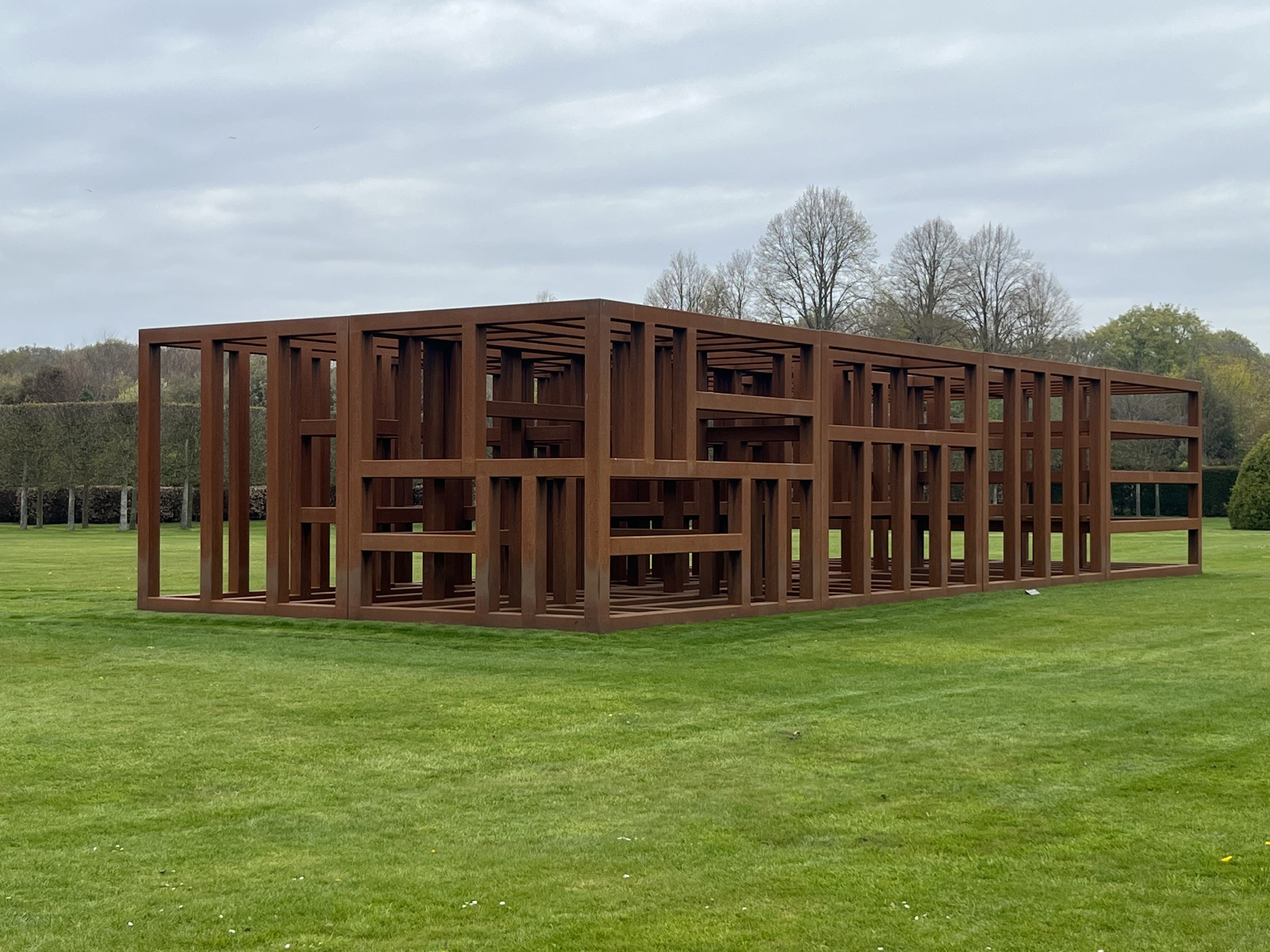
Crate of Air 2018, Corten steel, 3.6 x 19.2 x 7.2 m by Sean Scully
The largest piece Crate Of Air sits in parallel to the western elevation of the house, mirroring the height of the pleached hedges running down either side of the main lawn. It operates like a giant viewfinder, bringing human scale and lending a point of focus to the broad, open views of the immacultate lawn, leading the viewers eye away, toward the parkland and the horizon beyond.
There is a second steel piece placed at the meeting of the paths in the 'wilderness' area, where many of the sculptures in the contemporary collection are located. The piece is wilfully off-balance. Where Crate of Air is neatly aligned, Air Cage is made up of a series of clever overhangs. Its grid, although regular has an off-centre rhythm, with sections that shift against the layers it depends upon for its structural integrity, creating slithers of negative space. Its surface texture, where oxidation traces the pooling process of water before running off, emphasising the opposing qualities of the organic and the manufactured.
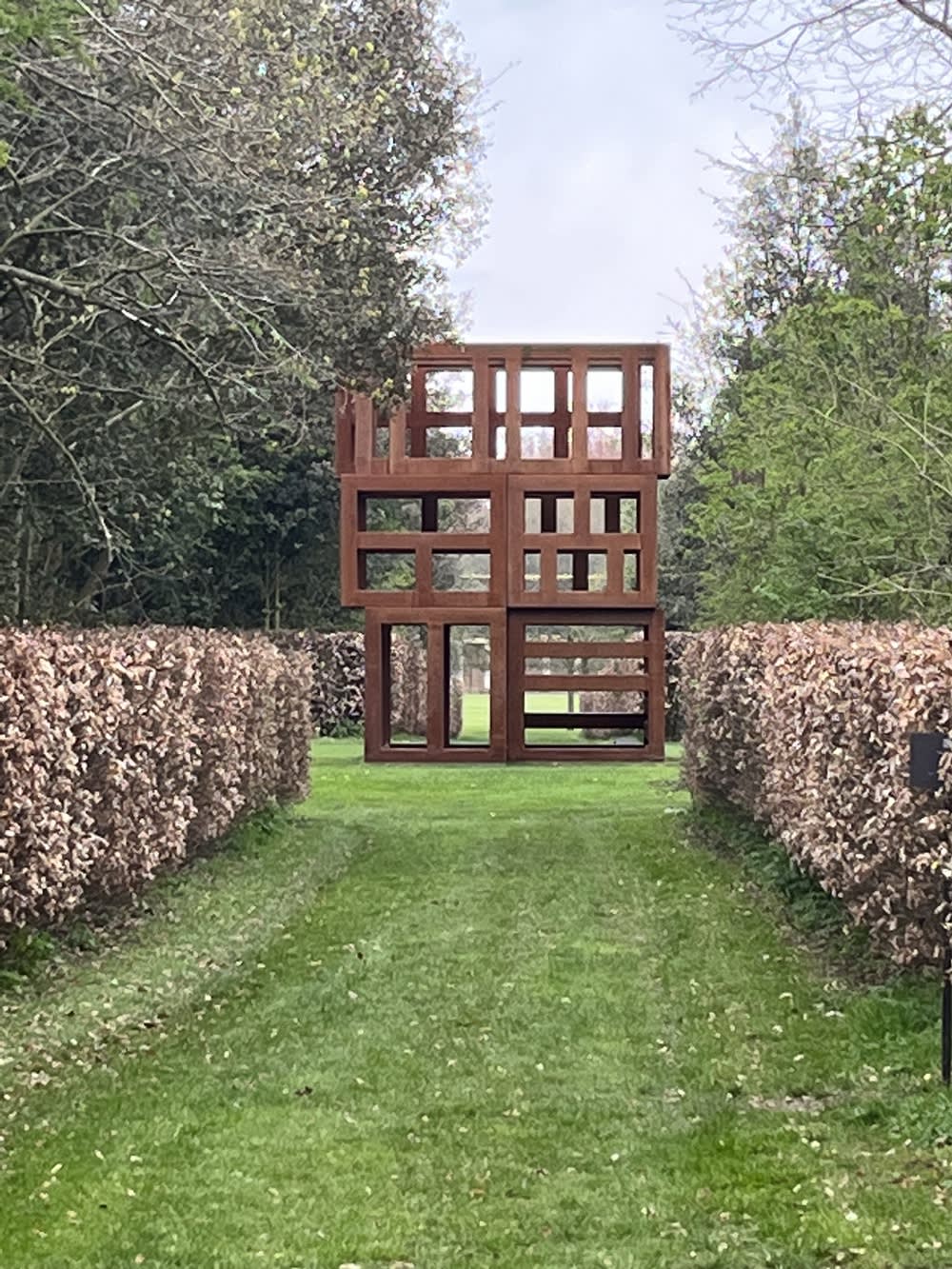
Air Cage, 2020, Corten steel, 5.1 x 3.3 x 2.6 m © Sean Scully
Inside the house are several smaller sculptures that follow a different methodology. These are composed of unitary elements like circular stone rings or coloured glass bars stacked one on top of another to form a tower. In the separate gallery space off the main lawn are a collection of illustrated letters, an early painting from the early 70s and three more recent canvases. The paintings are breathtaking. It is not difficult to see why Scully has achieved prolongued international success with these, the two largest are almost overwhelming in the confined space of the gallery. The darker, more sombre of the two is incredibly moving.
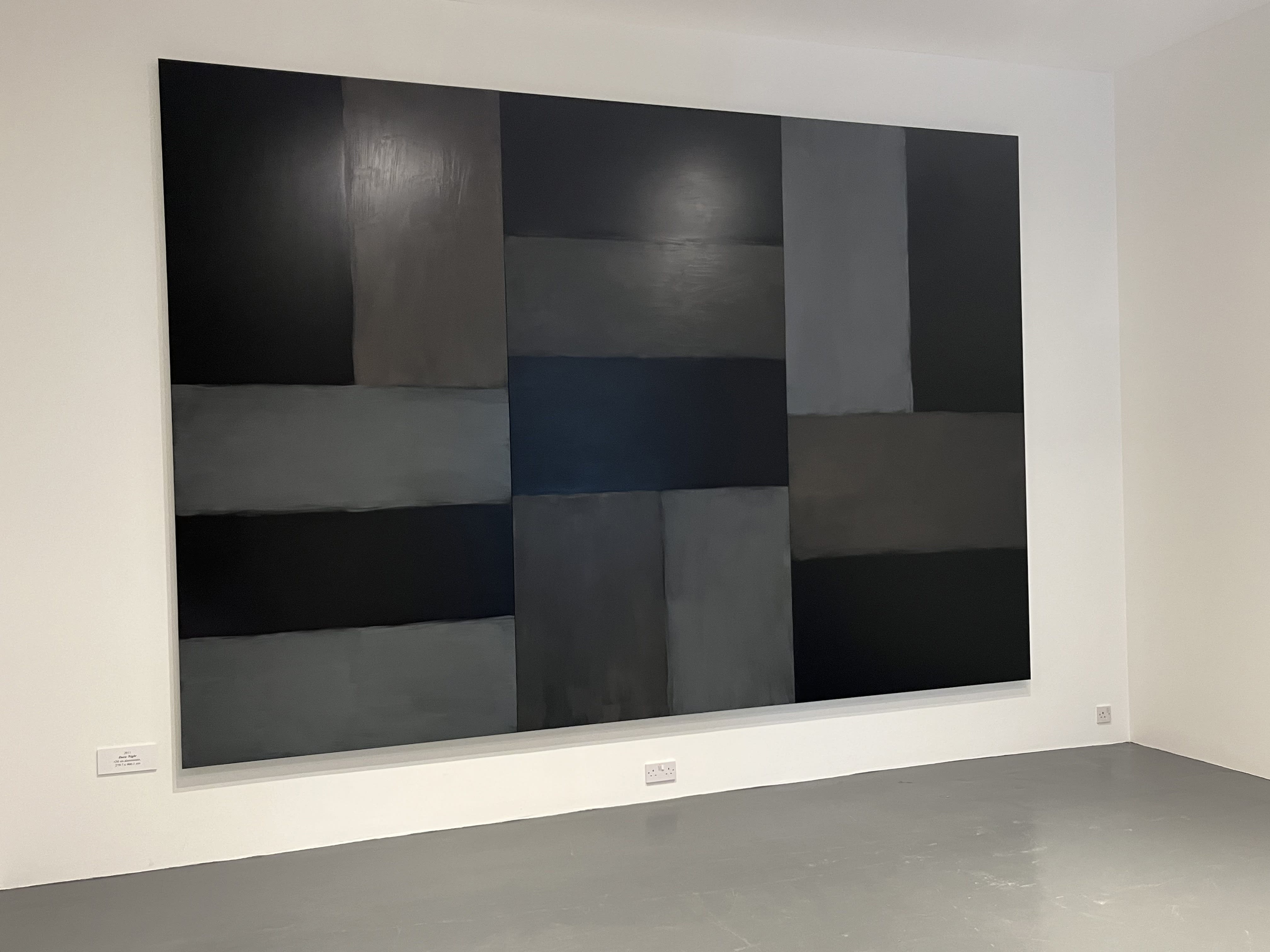
Doric Night, 2011, oil on aluminium, 279.7 x 406 cm © Sean Scully
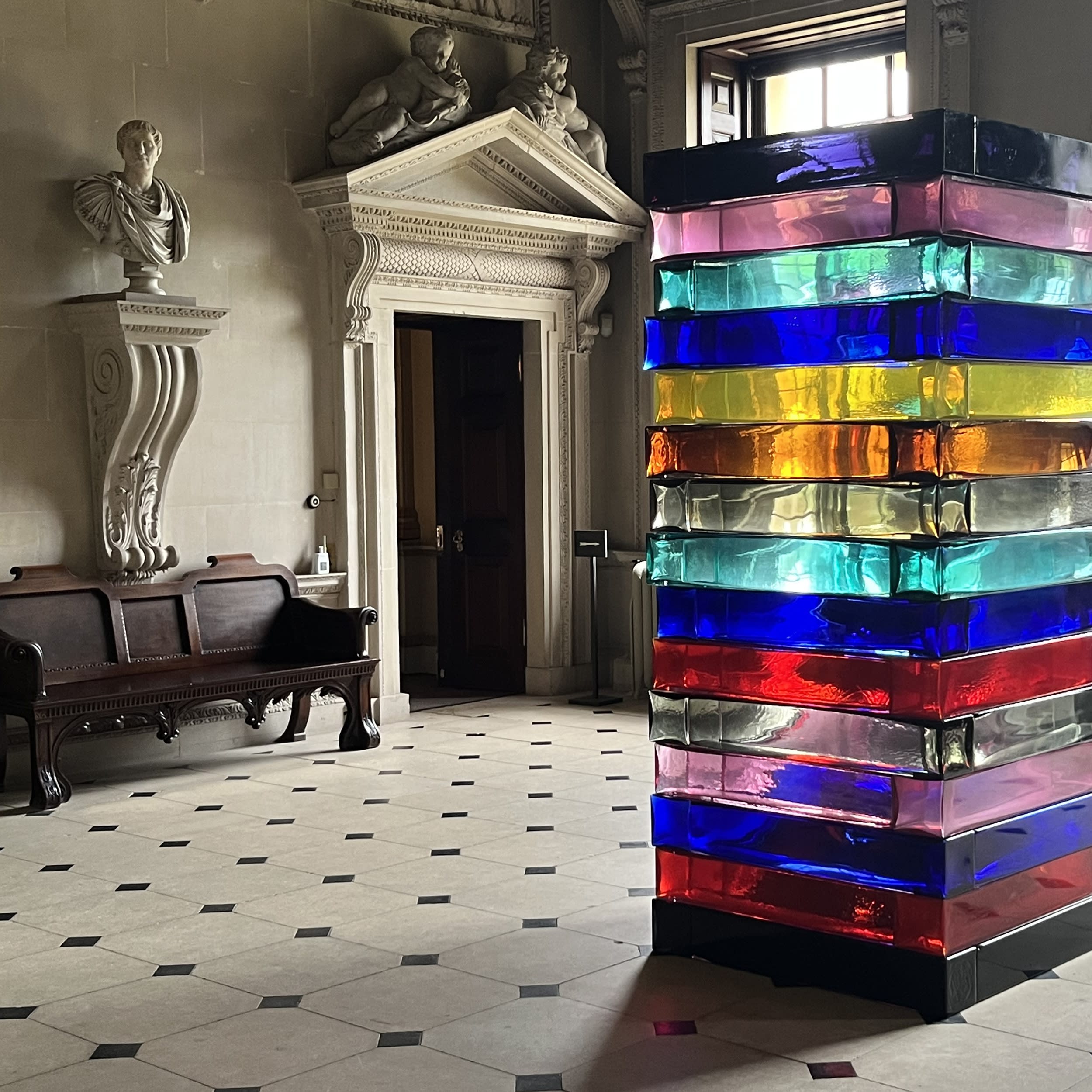
Venice Stack, 2020, Murano glass,, 270 x 108 x 108 cm © Sean Scully
About the author
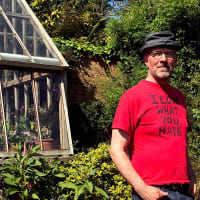
Paul Barratt
Paul Barratt started working in contemporary art galleries in 1989, having graduated in Fine Art from Goldmsith’s, London University. He initially worked at Anthony d’Offay Gallery, one of the contemporary art dealers, who dominated the London art market in the 80s and 90s. He was approached by the Lisson Gallery to be gallery manager for the influential art dealer Nicholas Logsdail. This was followed by a short period in New York at Gladstone Gallery, to work for visionary art dealer Barbara Gladstone, working with the artist and filmmaker Matthew Barney.
On his return to London, Paul secured a place on the postgraduate curatorial course at the Royal College of Art, to complete an MA. After graduation in 2001, he worked as an independent curator on several projects in Oslo, London, Brighton and Basel, before joining Paul Vater at his design agency Sugarfree in 2004. He has worked with Paul ever since.





